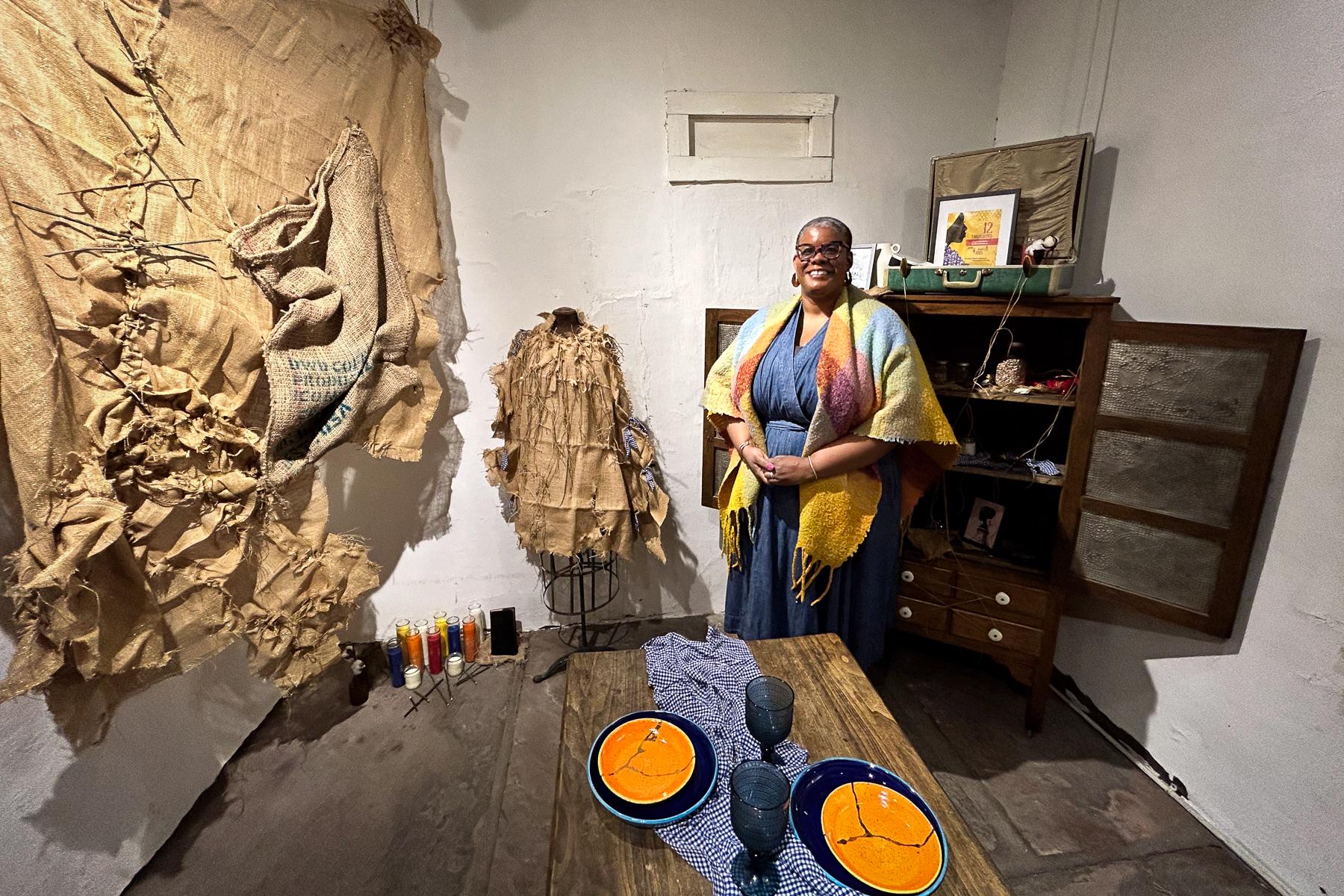Construction of the United States Olympic Museum is well underway in Colorado Springs. Once finished, officials hope it will become a major draw for the city and a new centerpiece of the downtown landscape. Organizers also hope it will be something else: one of the most accessible museums in the world for folks with disabilities.
In the dusty, cavernous room that will soon be the atrium of the U.S. Olympic Museum, construction crews are busy framing walls and installing floors. The bones of the building are largely in place, and now the team is beginning to turn its attention to the details that will define the space.
“The hard work is done,” said Stan Rovira, who is managing the project. “Putting up drywall, painting and that kind of stuff goes pretty fast. This floor will be terrazzo, that’ll take some time.”
Rovira has had a long career in construction in Colorado Springs, leading building projects at Colorado College and UCCS. But he believes the Olympic Museum is unique, thanks in part to its emphasis on accessibility.
“To me, that’s the central story of this building,” he said.
From the museum's inception in 2012, organizers said they wanted to ensure the facility gave equal weight to the achievements and history of athletes -- both Olympic and Paralympic. That led to conversations about how to incorporate the principle of inclusion into the design of the space itself.
"The idea is that it's very simple, the movement through each space, and that everybody can sort of have a shared path going through the cycle of galleries," explained architect Ben Gilmartin.
“To us, it’s really about equality,” explained museum CEO Chris Liedel. “And bringing to equality that, as an individual, I could be able-bodied and someone could be disabled, that we walk up to the same exhibit at the same time and we get the same experience.”
The building was designed by New York-based architecture firm, Diller, Scofidio and Renfro. As the architects thought through the layout of the space, they turned to Ileana Rodriquez -- someone with unique insight into the challenges and possibilities of accessible design.
Rodriguez is a Paralympic swimmer who competed for the U.S. She’s also an architectural designer. Rodriguez has used a wheelchair since she was 13, and as an architect, she has developed a particular interest in creating buildings that are both accessible and design-oriented.
“I wanted to kind of look at architecture from the perspective of someone who lives through accessibility everyday,” she said. “But looking at architecture to be beautiful for these people. Not just the typical grab bars and ugly bathrooms that we find everywhere.”
Rodriguez was consulted early in the design process. She said she feels the designers of the museum have struck that balance of aesthetics and accessibility. To her, the building’s most important feature is the path through it. When visitors arrive, they’ll enter an elevator which will take them to the top floor. From there, they’ll follow a gently sloping, spiral path down to the ground floor, slowly circling through a series of interactive exhibits.

“The idea is that it’s very simple, the movement through each space and that everybody can sort of have a shared path going through the cycle of galleries,” explained architect Ben Gilmartin. He’s the partner in charge of the project at Diller, Scofidio and Renfro.
“The ramps are wide, and they sort of allow people to be side-by-side going down the ramp with a partner,” he said.
The space will have other accessibility features as well. Upon entering the museum, visitors will get a personalized electronic tag featuring information about their particular needs -- if they're hard of hearing or have difficulty reading small print, for example. Many exhibits will then automatically adjust to meet those requirements.
Museum CEO Chris Liedel explained that designing the building to welcome as many people as possible is central to its broader mission.
“We want to be a museum of hopes and dreams,” he said.
He said he hopes the facility will inspire anyone who visits to pursue their own “Olympic-sized” aspirations, whatever they may be.
The U.S. Olympic Museum is expected to open its doors in the spring of 2020.








